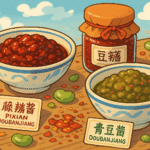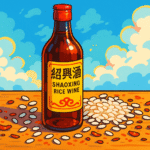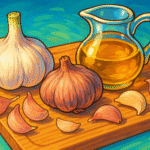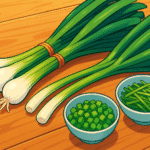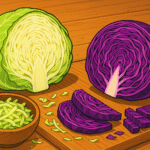Twice-Cooked Pork
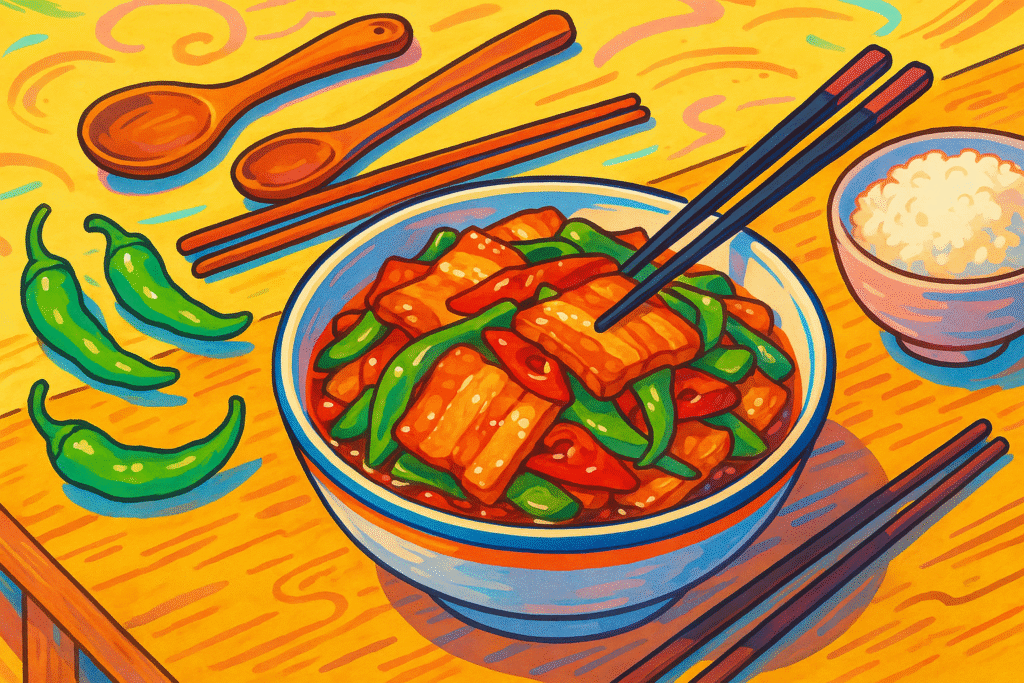
What is Twice-Cooked Pork
Twice-Cooked Pork, or huí guō ròu (回锅肉), stands as a pillar of Sichuan cuisine—celebrated for its tender pork belly, robust umami, and distinctive pairing of spice and savoriness. This dish begins with pork belly simmered until just tender, then sliced and stir-fried with a potent mix of fermented bean paste (doubanjiang), leeks, garlic, and sometimes crisp green peppers or cabbage.
What defines Twice-Cooked Pork is textural play: supple, melt-in-your-mouth pork contrasts with the crunch of vegetables and an aromatic, slightly spicy sauce. The flavors run deep—smoky-bitter from the bean paste, mellow-sweet from the pork, and bright, vegetal notes from the greens. Hailing from the heart of Sichuan, twice-cooked pork embodies the region’s love of assertive flavors and clever technique.
Where is Twice-Cooked Pork from and what is its history?
Twice-Cooked Pork traces its lineage to ancient Sichuan, with scholarly references dating as far back as the Song Dynasty. The “twice-cooked” process refers to the pork being simmered, then returned to the wok—a hallmark of the region’s resourceful cooking traditions. Legend tells that the origins were partly practical: leftover boiled pork from festivals was sliced and quick-fried to revive its flavor and make economical use of bounty.
Over centuries, twice-cooked pork evolved into a Sichuan classic, beloved in both home kitchens and banquet halls. The dish’s popularity rests on its adaptability: cooks may personalize the sauce, vegetables, or cut of meat, but the journey from pot to wok remains central. Today, 回锅肉 is a go-to comfort food throughout Sichuan province and a gateway dish for those exploring Chinese regional specialties.
Popular Ingredients in Twice-Cooked Pork
Variants of Twice-Cooked Pork
Classic Sichuan Version: In the traditional Sichuan style, pork belly is boiled with aromatics, cooled, and sliced thin, then returned to the wok with doubanjiang, Shaoxing wine, soy sauce, and plenty of leeks. The pork emerges glossy and tender, the sauce rich and complex—salty, spicy, faintly sweet, with pronounced bean paste funk.
Regional and Seasonal Adaptations:
Chongqing Variant: Characterized by even bolder chili heat and the frequent addition of fresh green chilies for extra fire, this style amps up the málà qualities beloved in neighboring Chongqing.
Northern Chinese Version: In northern provinces, leeks may be replaced with sweet onions or local cabbages, resulting in a slightly lighter, sweeter finish and gentler heat.
Home-Style Adaptations: In both urban and rural homes, vegetables such as bell peppers or garlic shoots are added depending on what’s in season and available at local markets.
Festive and Modern Takes: During holidays or banquets, Twice-Cooked Pork might showcase premium pork or wild herbs, while trendy chefs experiment with lamb or even vegetarian “pork” (using tofu skins or wheat gluten), accommodating contemporary palates and dietary choices.
All your questions about Twice-Cooked Pork: answered
Why is it called “Twice-Cooked”?
The name reflects a two-step process: first, the pork is boiled until just tender, then sliced and stir-fried in a hot wok. This dual preparation yields both tenderness and caramelization.
What cut of pork works best for Twice-Cooked Pork?
Pork belly is traditional, prized for its balance of fat and meat that keeps the dish juicy and flavorful. Alternate cuts like shoulder can work, but may lack the rich, unctuous bite of belly.
Is Twice-Cooked Pork always spicy?
It’s typically assertive but not incendiary. Sichuan peppercorns are rare in the standard version; the primary heat source is the chili bean paste (doubanjiang). Adjusting paste quantity easily moderates the spice level.
Can I substitute ingredients if I don’t have doubanjiang?
For authenticity, doubanjiang is essential. However, if unavailable, try a combination of miso and chili paste—you’ll get some of the depth and umami, though not the signature complexity.
How is Twice-Cooked Pork served?
It’s most commonly served over steamed rice, though it can anchor a communal meal of several Sichuan-style dishes. Crisp greens or stir-fried seasonal vegetables pair well as milder accompaniments.

